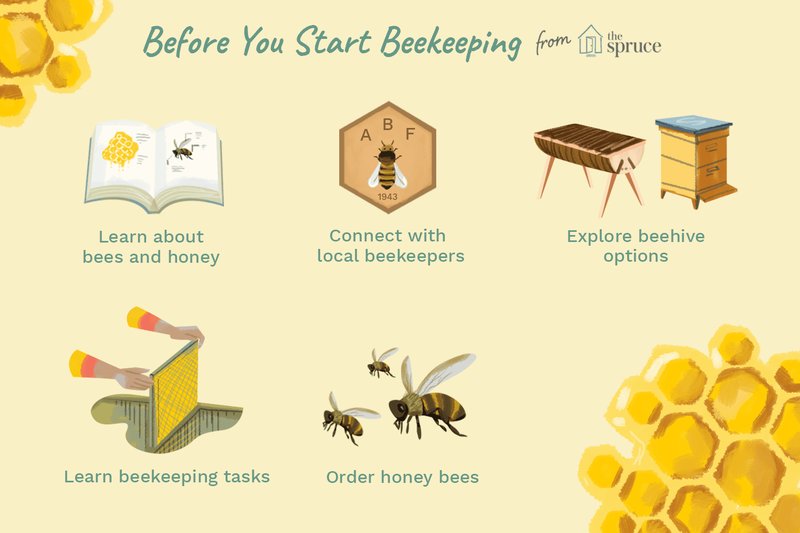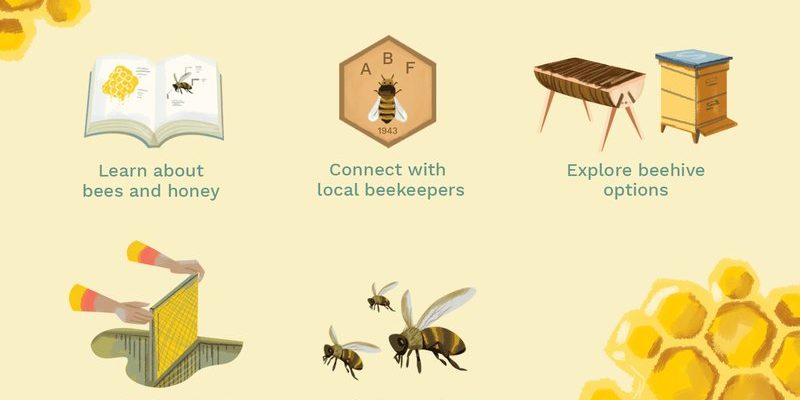
Starting with beekeeping is like planting a garden. You need the right tools, a bit of knowledge, and a lot of patience. No one expects a garden to flourish overnight, and beekeeping is no different. If you’re curious about how to start, you’re in luck. This beginner guide will walk you through all the essentials to help you kick off your beekeeping journey with confidence and joy.
Understanding the Basics of Beekeeping
Before diving in, it’s essential to grasp what beekeeping entails. At its core, beekeeping is about maintaining bee colonies, typically in man-made hives. You might be wondering what motivates someone to keep bees. Well, for many, it’s a mix of sustainable living, environmental conservation, and, of course, the allure of home-harvested honey.
The most common type of bee kept is the *Western honey bee* (*Apis mellifera*). They’re known for their productivity and docile nature, making them ideal for beginners. When you think of beekeeping, picture a bustling hive filled with honey-making workers, drones, and a queen. Each bee plays a vital role in the colony’s success.
Choosing the Right Location for Your Hives
Location is crucial when starting your beekeeping adventure. Selecting the right spot for your hives can influence the health of your bees significantly. Ideally, your hive should be placed in a dry, sunny area with some wind protection. Here are a few tips on finding the perfect location:
- Sunlight: Bees thrive in warm conditions. Aim for a spot that receives direct sun for most of the day.
- Accessibility: Ensure your hives are easily accessible for you to check and maintain them.
- Distance from Neighbors: Keep hives at least 10–15 feet away from property lines to avoid conflicts.
Additionally, be mindful of local regulations regarding beekeeping. Some areas have specific rules that dictate how many hives you can have or where they can be situated.
Getting the Right Beekeeping Gear
Now that you have a location, it’s time to think about gear. Investing in the right equipment is crucial for both your safety and the bees’ wellbeing. Here’s what you’ll need to get started:
- Bee Suit: A full bee suit with a veil protects you from stings. Trust me, it’s worth it!
- Smoker: This tool calms bees during hive inspections by masking alarm pheromones.
- Hive Tool: Essential for prying apart hive components and scraping off excess wax.
- Bee Hives: A Langstroth hive is the most common choice for beginners—the standard option.
Each piece of gear plays a role in making your beekeeping experience smooth and enjoyable. Don’t hesitate to reach out to local beekeeping clubs or stores; they often provide helpful tips for beginners.
Setting Up Your Bee Hive
Setting up your hive can feel like assembling a puzzle. Start by placing the hive on a sturdy, level surface. The bottom board should be above ground level to prevent moisture accumulation. If you’re using a Langstroth hive, the structure usually consists of stacked boxes called supers.
Make sure you have frames inside the supers where bees will build their honeycomb. Most new beekeepers choose to use foundation sheets, which help guide the bees in constructing their comb. Once your hive is ready, it’s time to introduce your bees.
You can either purchase a package of bees or a nucleus hive, often called a nuc. Both options come with a queen and workers, but a nuc is typically more established, giving you a head start.
Caring for Your Bees
Taking care of your bees is an ongoing commitment. Regular checks on your hive are vital to ensure the queen is healthy and laying eggs, the workers are busy gathering nectar, and there aren’t any pests or diseases.
During your inspections, look for these key signs:
- Queen Presence: Spotting the queen indicates your hive is healthy and functioning.
- Capped Honey Comb: This shows your bees have successfully stored food for the winter.
- Signs of Disease: Watch for anything unusual; early detection leads to better outcomes.
It’s also essential to feed your bees, especially in early spring or late fall, when natural sources of food may be scarce. A simple sugar syrup can keep them nourished during these times.
Harvesting Honey
After months of hard work, it’s time for one of the most rewarding parts of beekeeping—harvesting honey! Generally, you can start harvesting honey in late summer when the bees have had time to collect and process nectar. Here’s how you can do it:
1. Gather Your Gear: Make sure you have a bee suit, smoker, and honey extraction equipment.
2. Inspect the Hive: Only harvest honey from fully capped frames. This ensures it’s ready and won’t ferment.
3. Remove the Frames: Carefully take out the frames, ensuring to minimize disturbance to the bees.
4. Extract the Honey: Use an extractor to spin the honey out, or crush and strain if you don’t have one.
Honey extraction can be a messy but fun process! It’s your chance to taste the fruits of your labor.
Embracing Being a Backyard Beekeeper
The journey of beekeeping is as sweet as the honey you’ll harvest. It’s not just about the honey; it’s about learning, growing, and nurturing a vital part of our ecosystem. You might face challenges along the way, like dealing with pests or understanding bee behavior, but each experience will make you a better beekeeper.
Don’t forget to connect with local beekeeping communities, whether online or in person. Sharing tips, tricks, and experiences can enrich your journey immensely.
In conclusion, beekeeping at home is a delightful mix of science, nature, and community. As you embark on this exciting hobby, remember to be patient and enjoy every buzz of activity. Happy beekeeping!

